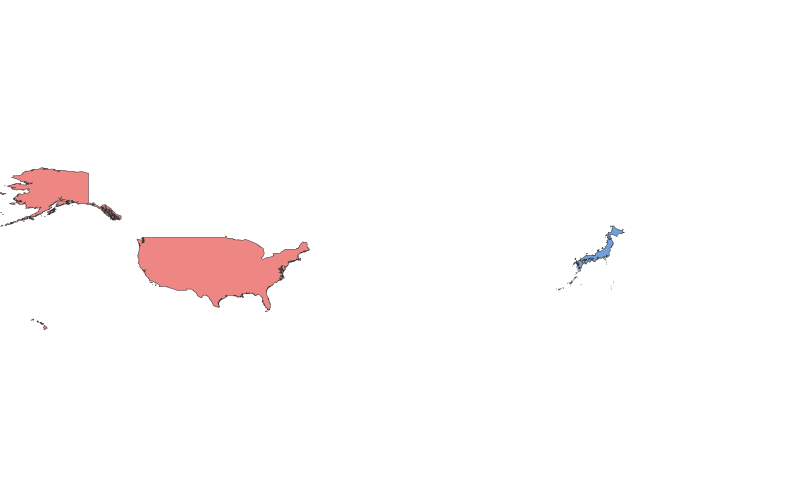United States vs. Japan: A Geographical Comparison

Geographical Comparison Table
| Category | United States | Japan |
|---|---|---|
| Location | North America, bordered by Canada and Mexico | East Asia, island nation in the Pacific Ocean |
| Size | ~9.8 million km² (3rd largest country) | ~377,975 km² (62nd largest country) |
| Climate | Diverse: Arctic (Alaska), tropical (Hawaii), temperate (mainland) | Temperate, with four distinct seasons; humid subtropical in south |
| Natural Resources | Abundant: oil, coal, natural gas, minerals, arable land | Limited: fish, hydropower, small mineral deposits |
| Urban Development | Highly urbanized (e.g., NYC, LA); sprawling suburbs | Densely populated cities (e.g., Tokyo, Osaka); compact urban design |
| Transportation | Car-dominated; extensive highway and air networks | Efficient public transit (trains, subways); high-speed rail (Shinkansen) |
Description of the Two Locations
United States
The United States is a vast country with diverse landscapes, from the Rocky Mountains to the Great Plains and coastal regions. Its history is shaped by colonization, westward expansion, and immigration, creating a multicultural society. The U.S. has the world's largest economy, driven by technology, finance, and manufacturing. Culturally, it is known for its global influence in entertainment, music, and innovation.
Japan
Japan is an archipelago of mountainous islands with limited arable land. Its history includes feudal eras, rapid modernization during the Meiji Restoration, and post-WWII economic growth. Japan's culture blends traditional practices (e.g., tea ceremonies, Shinto shrines) with cutting-edge technology. The economy is highly advanced, focusing on automobiles, electronics, and robotics. Japan is also renowned for its efficient infrastructure and high quality of life.
Both nations are global leaders but differ significantly in geography, resources, and urban development, reflecting their unique historical and environmental contexts.